Table of Contents
ToggleIn today’s digital jungle, security compliance isn’t just a buzzword; it’s the shield that protects businesses from lurking threats. Imagine trying to navigate a minefield blindfolded—without proper compliance, that’s exactly what companies are doing. They might as well be handing out invitations to hackers and data breaches.
But fear not! Security compliance can be as straightforward as following a recipe for chocolate chip cookies—just with fewer calories and a lot more paperwork. By understanding and implementing compliance standards, organizations not only safeguard their sensitive data but also boost their reputation. So, let’s dive into the world of security compliance, where the stakes are high, but the rewards are even higher. After all, who wouldn’t want to be the hero in their own cybersecurity story?
Understanding Security Compliance
Security compliance refers to adherence to regulations, standards, and guidelines that govern data protection and cybersecurity. Organizations implement these measures to safeguard sensitive information from unauthorized access and threats.
Definition of Security Compliance
Security compliance represents a set of protocols and standards designed to protect data and systems. These frameworks include regulations like GDPR, HIPAA, and SOX that define specific security measures organizations must follow. The aim focuses on maintaining data integrity, confidentiality, and availability while minimizing risks associated with data breaches or cyberattacks. A clear definition includes compliance as an ongoing commitment rather than a one-time effort.
Importance of Security Compliance
Security compliance holds significant importance for organizations across various industries. First, it fosters trust with customers and stakeholders through demonstrated commitment to safeguarding sensitive data. Compliance also reduces the risk of legal penalties and financial losses stemming from data breaches. Increased compliance minimizes the likelihood of cyber threats succeeding, enhancing overall security posture. Additionally, meeting compliance standards can streamline operations by establishing clear security protocols for employees. Embracing security compliance ultimately supports long-term business sustainability and competitiveness in the market.
Key Regulations and Standards

Security compliance involves several key regulations and standards that organizations must adhere to, ensuring data protection and cybersecurity.
GDPR
The General Data Protection Regulation (GDPR) governs the processing of personal data in the European Union. Organizations that handle personal data of EU residents must implement strict privacy protections. Compliance requires transparency, data subject rights, and clear consent mechanisms. Non-compliance can lead to significant fines, reaching up to 20 million euros or 4% of annual global revenue. GDPR emphasizes accountability, mandating data protection officers in certain cases.
HIPAA
The Health Insurance Portability and Accountability Act (HIPAA) sets standards for the protection of health information in the United States. Covered entities must secure patients’ protected health information (PHI) through administrative, physical, and technical safeguards. Compliance includes conducting risk assessments and providing employee training. Breach notifications are mandatory when unauthorized access occurs. Violations can result in fines ranging from $100 to $50,000 per violation, aggregating to more than $1.5 million annually.
PCI DSS
The Payment Card Industry Data Security Standard (PCI DSS) outlines security measures for organizations that handle credit card transactions. Compliance is essential for ensuring secure transmission, processing, and storage of cardholder data. Requirements include maintaining a secure network, implementing strong access control measures, and regularly monitoring and testing networks. Non-compliance may lead to penalties from credit card companies and increased liability for data breaches. Organizations must complete an annual assessment to maintain compliance and demonstrate adherence to the standards.
Benefits of Security Compliance
Security compliance offers several key advantages that enhance an organization’s overall security framework. It fosters a safer environment for sensitive data, promoting trust and credibility with clients and stakeholders.
Risk Mitigation
Businesses significantly reduce the risk of data breaches and cyberattacks through security compliance. Adhering to regulatory standards enables companies to implement robust security measures. Organizations can identify vulnerabilities early, allowing for timely interventions. Compliance with guidelines, like GDPR or HIPAA, minimizes potential financial penalties and legal repercussions. By establishing a culture of security awareness, employees become more vigilant against threats. Each step towards compliance serves to bolster the organization’s defense against malicious activities.
Enhanced Reputation
Maintaining security compliance strengthens a company’s reputation in the marketplace. Consumers are more likely to trust businesses demonstrating a commitment to data protection. Organizations that showcase compliance achievements attract more customers, as they prioritize security in their operations. A strong reputation can lead to competitive advantages, ensuring long-term customer loyalty. Additionally, compliance enhances stakeholder confidence, encouraging partnerships and collaborations. Robust compliance frameworks position businesses favorably during audits and regulatory reviews, reflecting a commitment to ethical business practices.
Challenges in Achieving Security Compliance
Achieving security compliance presents several obstacles for organizations. Understanding these challenges can help streamline efforts toward regulatory adherence.
Resource Allocation
Allocating adequate resources poses a significant challenge. Budget constraints often limit investment in security technologies and personnel. Companies may face difficulty in hiring skilled staff, leading to a shortage in compliance expertise. Additionally, prioritizing compliance tasks can divert attention from other critical business functions. Organizations must balance their operational needs against compliance requirements to maintain effectiveness. Successful resource allocation involves assessing risk levels and determining where investments yield the most significant impact.
Keeping Up with Changes
Remaining up to date with regulatory changes presents another challenge. New laws and updates to existing regulations occur frequently, requiring constant vigilance. Organizations struggle to adapt their compliance strategies in response to evolving standards. Training staff on the latest requirements adds to the complexity, often resulting in skill gaps. Managing compliance across multiple jurisdictions can further complicate adherence. Ongoing education and dedicated compliance teams can mitigate these challenges, ensuring organizations stay aligned with current laws.
Strategies for Maintaining Security Compliance
Organizations must implement robust strategies to maintain security compliance effectively. Regular assessments and employee training play a crucial role in this process.
Regular Audits
Conducting regular audits is essential for identifying compliance gaps and mitigating risks. These audits evaluate security controls and practices against relevant regulations. Organizations can spot vulnerabilities through systematic reviews and create tailored remediation plans. Regular audits not only ensure adherence to compliance standards but also foster a proactive security culture. Implementing audit schedules at least annually provides a consistent framework to measure compliance progress against benchmarks and regulatory requirements.
Employee Training
Employee training significantly enhances compliance maintenance by increasing awareness of security protocols. Organizations should provide comprehensive training programs tailored to their specific compliance requirements. Regular training sessions help employees understand the importance of data protection, regulatory requirements, and their responsibilities. Engaging training methods, such as workshops and interactive modules, strengthen knowledge retention. Assessing employee understanding through quizzes and evaluations reinforces their commitment to security compliance. Ultimately, well-informed employees serve as a critical line of defense against potential security threats.
Security compliance is not just a regulatory checkbox; it’s a vital component of a resilient business strategy. By prioritizing compliance, organizations can protect their sensitive data while building trust with customers and stakeholders. The commitment to ongoing education and regular audits ensures that businesses remain vigilant against emerging threats and evolving regulations.
Investing in security compliance ultimately enhances a company’s reputation and operational efficiency. As organizations navigate the complexities of today’s digital landscape, embracing compliance as a core principle will pave the way for long-term success and sustainability.




